
Napoleon's Last Battles is a board wargame published by Simulations Publications in 1976 that simulates the last four battles fought by Napoleon. It was one of SPI's most popular games, and also received many positive reviews.
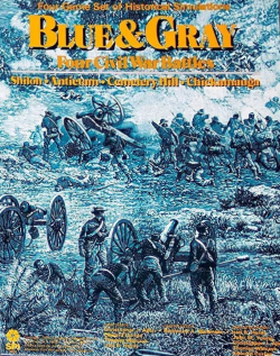
Blue & Gray: Four American Civil War Battles is a board wargame originally published by Simulations Publications, Inc. (SPI) in 1975 that simulates four battles from the American Civil War.

Island War: Four Pacific Battles is a collection of four board wargames published in 1975 by Simulations Publications Inc. (SPI) that simulates various battles between American and Japanese forces during the Pacific Campaign of World War II.

Marengo: Napoleon in Italy, 14 June 1800 is a board wargame published by Simulations Publications Inc. (SPI) in 1975 as one of four games packaged together in the Napoleon at War "quadrigame". Marengo was also released as a separate game the same year. The game simulates the Battle of Marengo between Austrian and French forces.

Napoleon at War, subtitled "Four Battles", is a collection of four board wargames published by Simulations Publications Inc. (SPI) in 1975 that simulates various battles fought by Napoleon.

Bloody Ridge, subtitled "Turning Point on Guadalcanal, September 1942", is a board wargame published by Simulations Publications Inc. (SPI) in 1975 that simulates the Guadalcanal Campaign during World War II. The game was originally published as part of the Island War: Four Pacific Battles "quadrigame" — a gamebox containing four games simulating four separate battles that all use the same rules. Bloody Ridge was also published as an individual "folio game."
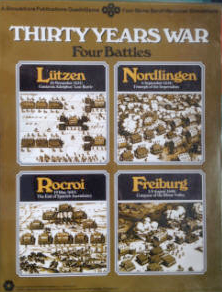
Thirty Years War, subtitled "Four Battles", is a "quadrigame" — four separate board wargames packaged in one box that use a common set of rules — published by Simulations Publications Inc. (SPI) in 1976. The four games simulate different battles during the Thirty Years' War, and were sold individually as well as in the quadrigame format. Some of the games were well received by critics, but overall, the quadrigame did not sell well.
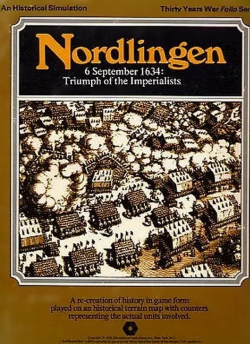
Nordlingen, subtitled "6 September 1634 – Triumph of the Imperialists", is a board wargame published by Simulations Publications Inc. (SPI) in 1976 that simulates the 1634 Battle of Nordlingen during the Thirty Years' War. Nordlingen was originally sold as one of four separate games packaged together in Thirty Years War, a "quadrigame". Many critics called it the best game of the four, and Nordlingen was also published as a separate game.

Rocroi, subtitled "19 May 1643 – The End of Spanish Ascendancy", is a board wargame published by Simulations Publications Inc. (SPI) in 1976 that simulates the 1643 Battle of Rocroi during the Thirty Years' War. Rocroi was originally sold as one of four separate games packaged together in Thirty Years War, a "quadrigame", but it was also published as an individual game. It received mixed reviews from critics, some of whom called it a "bland tactical problem", while others declared it was the best game of the four in the Thirty Years War box.

Breitenfeld, subtitled "Triumph of the Swedish System", is a board wargame published by Simulations Publications Inc. (SPI) in 1976 that simulates the 1631 Battle of Breitenfeld during the Thirty Years' War. Breitenfeld was a free game that appeared in Strategy & Tactics, designed to promote SPI's soon-to-be-launched wargame Thirty Years War. Breitenfeld proved popular and was also published as part of SPI's "folio" series of games.

Westwall: Four Battles to Germany is a collection of four board wargames published by Simulations Publications (SPI) in 1976 that simulate battles in Europe in late 1944 and early 1945 during World War II.

Blue & Gray II, subtitled "Four American Civil War Battles", is a collection of four board wargames originally published by Simulations Publications, Inc. (SPI) in 1975 that each simulate a battle from the American Civil War. It is the sequel to Blue & Gray published earlier in the year. Each of the four games was also published as individual "folio games."

Hurtgen Forest, subtitled "Approach to the Roer, November 1944 ", is a board wargame published by Simulations Publications Inc. (SPI) in 1976 that simulates the Battle of Hürtgen Forest during the final year of World War II. The game was originally published by SPI as part of a four-game collection titled Westwall: Four Battles to Germany, but it was also released as an individual "folio game." While the quadrigame Westwall received good reviews from critics, the static nature of Hurtgen Forest was less well received.
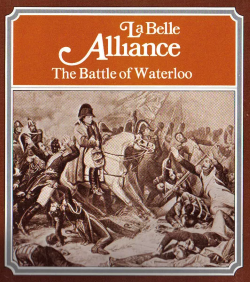
La Belle Alliance: The Battle of Waterloo is a board wargame published by Simulations Publications Inc. (SPI) in 1976 that simulates the Battle of Waterloo in 1815. It was one of four games that were published as part of the "quadrigame" titled Napoleon's Last Battles, but was also released as an individual "folio game", packaged in a shrinkwrapped cardboard folio.

The Battle of Nations, subtitled "The Encirclement at Leipzig, 16–19 October 1813", is a board wargame published by Simulations Publications Inc. (SPI) in 1975 that simulates the Battle of Leipzig in 1813. It was one of four games that were published as part of the "quadrigame" titled Napoleon at War, but was also released as a "folio game", packaged in a shrinkwrapped cardboard folio. It was popular in a 1976 poll of favorite wargames, and critics also gave it favorable reviews.
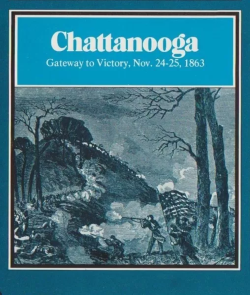
Chattanooga: Gateway to Victory, Nov. 24-25, 1863 is a board wargame published by Simulations Publications, Inc. (SPI) in 1975 that simulates the Battle of Chattanooga during the American Civil War. The game was originally part of the four-game collection Blue & Gray II, and was also released as a stand-alone "folio" game.
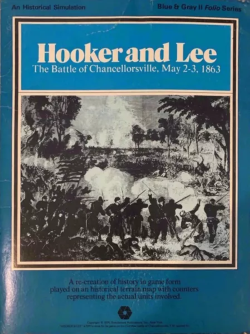
Hooker and Lee, subtitled "The Battle of Chancellorsville, May 2-3, 1863, Nov. 24-25, 1863" is a board wargame published by Simulations Publications, Inc. (SPI) in 1975 that simulates the Battle of Chancellorsville during the American Civil War. The game was originally part of the four-game collection Blue & Gray II, and was also released as a stand-alone "folio" game.
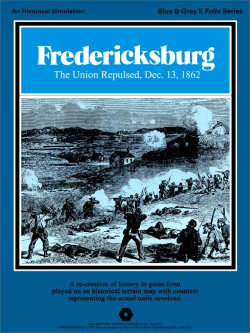
Fredericksburg: The Union Repulsed is a board wargame published by Simulations Publications, Inc. (SPI) in 1975 that simulates the Battle of Fredericksburg during the American Civil War. The game was originally part of the four-game collection Blue & Gray II, and was also released as a stand-alone "folio" game.

Remagen: Bridgehead on the Rhine, March 1945 is a board wargame published by Simulations Publications Inc. (SPI) in 1976 that simulates the Battle of Remagen during World War II. The game was originally published as part of the Westwall: Four Battles to Germany "quadrigame" — a gamebox containing four games simulating four separate battles that all use the same rules. Remagen was also published as an individual "folio game."
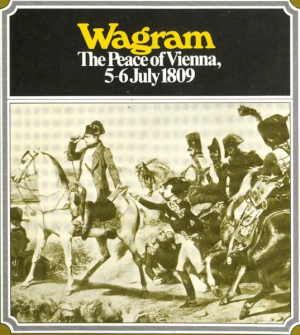
Wagram: The Peace of Vienna, 5–6 July 1809 is a board wargame published by Simulations Publications Inc. (SPI) in 1975 that simulates the Battle of Wagram in July 1809. It was one of four games that were part of the "quadrigame" titled Napoleon at War, but it was also released as an individual game with a set of metal miniatures. Wagram was rated highly in a 1976 poll of favorite wargames, and critics called it the best of the four games in the Napoleon at War box.




















